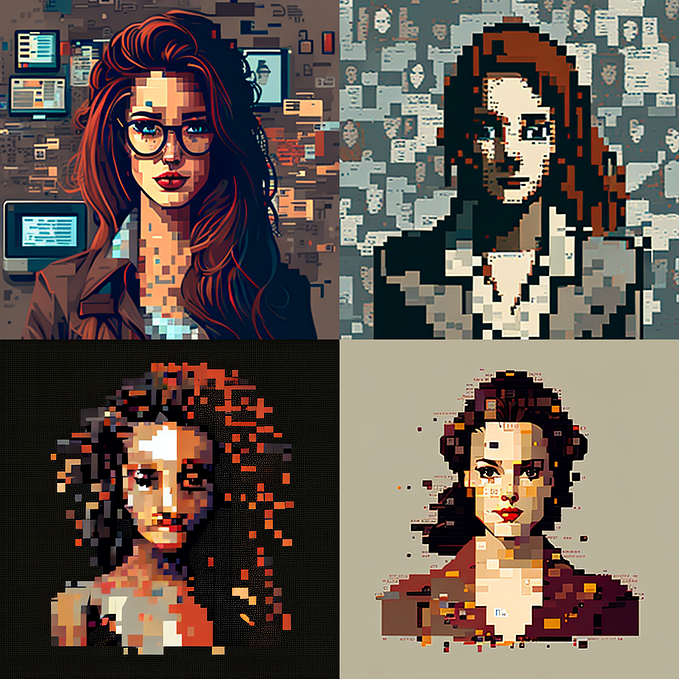The future business model of a digital art online marketplace
Digital art is like any other art. It’s just created using other tools from the traditional ones. Art is about emotion or message that is presented in a visual form independent from the tools used to create it. Digital arts today are cheaper than the traditional art market, although the prices are increasing.[1] “Early digital works cost a few thousand dollars, like any new medium,” says Magda Sawon, co-founder of the Postmasters Gallery in New York, which has half of its inventory in digital work. “The artists I work with go up to $30,000 and in a few instances, a few hundred thousand.”

Even big auction houses (Zwirner and Gagosian) are focusing on opening an online viewing room. “The move by Zwirner and Gagosian is most likely a response to the increasing focus that the major auction houses such as Christie’s and Sotheby’s are putting into digital and online technologies in their aggressive pursuit of the millennial collectors,” said Anders Petterson, the founder and managing director of ArtTactic. “I believe these models will evolve further and co-exist with third-party platforms, traditional offline sales, and ultimately just be one additional channel to cultivate the next generation of art collectors.” The auction houses in partnership with online shops such as Artsy are seeing a tremendous increase in sales.

The sale of e-Art is the essence of the proposed business model and is what will keep the [Cockpit][2]business model rolling through effectively capturing value. Christie’s on 23–25 October, Portrait of Edmond Belamy sold for an incredible $432,500, signaling the arrival of AI art on the world auction stage. It was not a product of the human mind but underlines the importance and relevance of a system of digital artwork.

The format of the presentation and the scarcity of art plays a big role in attracting targeted buyer in the market. With [Cockpit]- an online marketplace- the value is created by making displaying arts easier. Instead of worrying about bulky physical pieces, collectors can use modified display screens which practically substitutes the viewing experience. It’s also easier to move art from one location to another. Instead of physically moving the art piece, the collector can access their account via a Wi-Fi or phone network and download their collections in seconds.

To create a near paper experience, [Cockpit] will use E Ink technology. The e-ink technology is famously used in Amazon Kindle. As the technology is visible and reflective without any backlights, the image produced by it looks very similar to a painting on a canvas. At CES 2020, the E Ink announced that now the technology is not just restricted to black ink and can now be extended to sets of colors with the possibility to create around 40,000 colors. A full refresh of the page will take only twoseconds to move from one image to another. The e-ink technology comes with many additional advantages such as low power need, easy viewing even in bright sunlight, remain on the screen indefinitely without the need for any external power.
How will [Cockpit] make money? It can be branched into two parts: 1. Sale of modified screens 2. Sale of artworks. The sale of modified screens can be done even with a loss that would be compensated by a margin from the sale of the artworks.
[Cockpit] will not be exactly a freemium model, but it also opens up to various opportunities to display artworks for free. For example, a member can borrow e-Arts from their friends’ library. This would bring a network effect in which the value of using [Cockpit] will grow as more and more people start using it. [Cockpit] will also have copyright deals with artists to create an online library of arts that members with a subscription can borrow for a fixed amount of time, say 14 days. The subscription will bring an additional source of revenue with marginal cost as the usability of the same art will increase manifold similar to the “Netflix” model of offering to customers.
One of the major challenges with the digital art market is to keep maintain the original copy of the artwork and check the unauthorized replication. Blockchain technology will be used to maintain the authenticity and provenance of the work, thus driving some traditional collectors to the digital platform as well. “Blockchain technology is commonly used to create ledgers where digital-art transactions are recorded and art is stored”, Mr. MacLellan says. “Once an image is embedded in the blockchain ledger it can no longer be modified”, he says. “The ledger allows the buyer to verify the number of images in existence and trace the ownership of a piece back to its creator. Only the current owner can unlock the blockchain ledger entry to view the image or to permit its sale to someone else”, Mr. MacLellan says.
From a business point of view, it would be a great model with a constant influx of revenue that can be directly translated into profit due to low-cost structure. People who may use the borrow or free feature of the service will help drive up the traffic, thus increasing the probability of ending up buying art from the platform.
[1] Weil, D., 2019. The Digital Art Market Heats Up. [online] WSJ. Available at: <https://www.wsj.com/articles/the-digital-art-market-heats-up-11553479261>
[2] [Cockpit] is the proposed name of the new product and service proposed by the author of this paper








